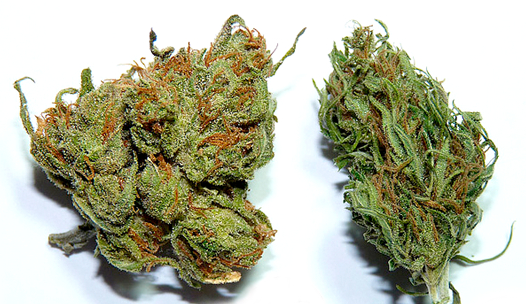Indica vs. Sativa: Which Cannabis Type Has More THC and CBD?
Many people have heard claims that there are major differences between cannabis types—indica and sativa—that give each plant unique effects. For example, some believe that indica-dominant strains produce more CBD, while sativas are more likely to have higher THC levels. But are these claims actually true, or are they just myths within cannabis culture?
Chemical analyses and medical studies of both types show that, regardless of whether a strain is indica or sativa dominant, cannabis plants are chemically and psychoactively similar. In other words, statements like “indicas make you sleepier because of higher CBD” or “sativas are more stimulating” are largely myths created by consumers.
That said, different cannabis strains can indeed have noticeably different effects. However, these differences can’t simply be explained or measured by whether a plant is more indica or sativa. Most of these variations are due to the unique genetic heritage of each strain, shaped by its environment (for wild landraces) or by breeders’ goals (for cultivated hybrids).
Myth Busting: Indica vs. Sativa
Indica plants do differ from sativas in many visible ways: indicas are compact with broad leaves and dense buds, while sativas are tall (sometimes several meters high) with many clusters of small, airy buds. Each type also thrives in different climates: indicas prefer high-altitude subtropical regions with hot days and cold nights, while sativas do better in tropical lowlands with high humidity and constant warmth.
Despite these physical differences, they have little impact on the effects produced by consuming the flowers or extracts. Dr. Ethan Russo, a leading American expert on cannabis and its effects on the human nervous system, notes that dividing cannabis into “sativa” and “indica” categories is meaningless from a pharmacological perspective.
“This division is really just a commercial gimmick to illustrate plant structure for growers buying seeds. It doesn’t define chemical differences between strains, nor does it guarantee that a seed will grow into a tall ‘indica’ or a compact ‘sativa’ plant,” says Dr. Russo. To demonstrate his point, he compared the chemical profiles of two plants considered the purest representatives of each category.
Comparing THC and CBD Levels in Indica and Sativa Strains
To compare the chemical profiles of both types, we can look at data from Confidence Analytics, a Washington State lab that professionally tests the terpene and cannabinoid content of cannabis for the legal market.
The chart below compares THC concentrations (by mass) in indica (purple), sativa-dominant (red), and hybrid (green) strains:
- Sativa-dominant strains technically have slightly higher THC levels than indicas or hybrids, but the difference is only about 0.4%.
- In practical terms, all types have nearly the same THC concentration.
- If the common beliefs about cannabinoid differences were true, the chart would show sativas with much higher THC and indicas with much higher CBD, which is not the case.
Looking at CBD, the next chart shows the CBD content in the same plants:
- Again, all types have roughly the same CBD concentration.
- In fact, indicas showed slightly lower CBD than sativas or hybrids.
- The differences are less than 1%, and hybrids sometimes even surpass “pure” strains in CBD content.
So, instead of guessing a strain’s effects based on whether it’s “indica” or “sativa,” it’s better to look at its actual chemical makeup or, if that’s not possible, its genetic lineage.
The Effect Is in the Plant’s Heritage
Rather than focusing on minor details like bud shape or climate, study a strain’s lineage and estimate its cannabinoid content based on the known profiles of its parent plants. Since exact cannabinoid levels are often unknown even in legal dispensaries, pay attention to the strain’s ancestry. Plants with lower THC and balanced CBD will likely have a milder, more body-focused effect, while those with very high THC will produce a stronger psychoactive impact.
If you have access to lab-tested products, simply check the THC and CBD percentages and their ratio. For example, a strain with 25% THC will obviously be more stimulating than one with 16% THC balanced by a similar or slightly lower amount of CBD.
You can also search for specific strains or hybrids by name and description. There are plenty of online resources where you can instantly find information about strains with particular properties.
Of course, the subjective effects of a strain also depend on personal factors like your body’s biochemistry, as well as the method and dosage of consumption. For therapeutic use, it’s best to start with simple methods and low doses to avoid overconsumption. For recreational use, pay attention to the CBD content—avoid strains with high CBD or those where CBD is close to THC, as this can suppress the intoxicating effects.



